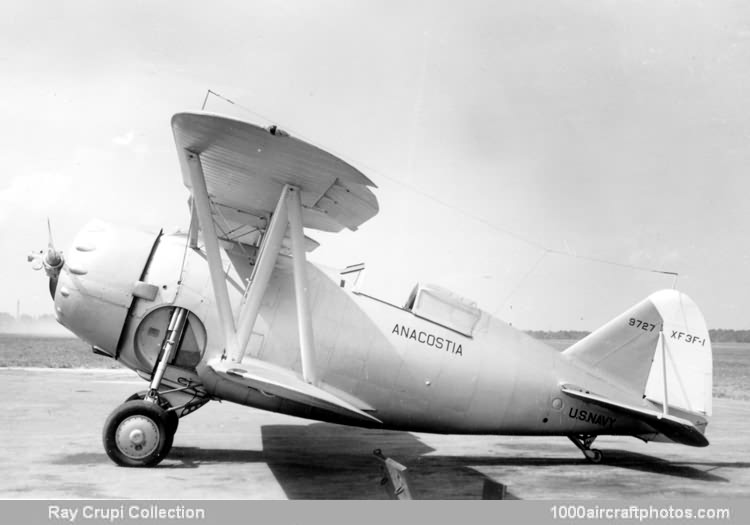07/31/2014. Remarks by Johan Visschedijk: "The final aircraft on the G-8 F2F contract (BuNo. 9676) was completed as the XF3F-1 prototype, with a longer fuselage and increased wing span to improve maneuverability. It crashed during flight testing in May 1935, but was replaced by a new airframe with the same serial number.
The higher weight of the XF3F-1 reduced the maximum speed, but this was improved by using the 650 hp R-1535-84 Twin Wasp in 54 production model F3F-1s (BuNos. 0211 to 0264) ordered on August 24, 1935. Delivered in the first eight months of 1936, these fighters went into service with VF-5B on the USS Ranger and VF-6B on USS Saratoga; these two units became VF-4 and VF-3 respectively in July 1939, retaining their Grumman biplanes until 1940.
A prototype ordered from Grumman on July 25, 1936, was tested at NAS Anacostia, Washington, District of Columbia, in January 1937 as the XF3F-2 (Grumman G-19, BuNo. 0452). The major change in this model was the use of the larger diameter, single-row 950 hp Wright R-1820-22 engine, changing the nose contours of the aircraft and increasing the performance. The Navy ordered 81 F3F-2s (BuNos. 0967 to 1047) on March 23, 1937, and used them to equip VF-6 on the USS Enterprise and Marine Squadrons VMF-1 and VMF-2 during 1938.
After the 65th production model F3F-2 had been fitted with an uprated Cyclone as the XF3F-3 (BuNo. 1031), the Navy ordered 27 F3F-3s (BuNos. 1444 to 1470) on June 21, 1938, the last of the Grumman fighter biplanes for the Navy and the last biplane fighters for any of the US Armed Services. Delivered from December 1938 onwards, they went to VF-5 on USS Yorktown but remained in front-line service for little more than a year.
By the end of 1941, none of the Grumman biplanes were still in operational use, but 23 F2Fs and 117 F3Fs were distributed around a number of naval air stations in the USA, where they remained in use as station hacks for some while longer."
